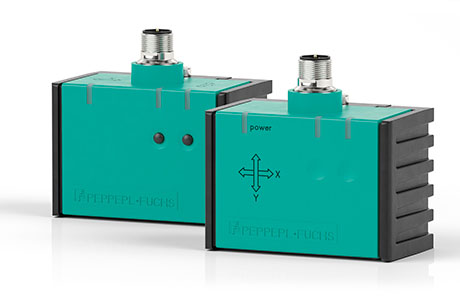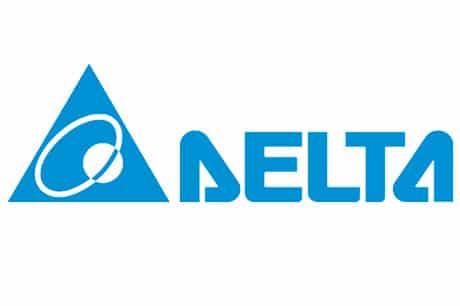
Introduction
Inclination sensors, or tilt sensors, measure tilt angles accurately. To fully understand the capabilities and performance of these sensors. It is essential to be familiar with the associated terminologies.
Terminologies include accuracy, temperature, output, calibration, sensitivity, measurement range. Response time is crucial in characterizing and describing inclination sensor functionality. Terms cover measurement precision, environment, output signals, calibration, sensitivity, and detectable tilt range.
Understanding these terminologies enables users to make informed decisions, assess sensor performance. It optimize the utilization of inclination sensors in diverse applications.
This article explains key terminologies, providing a comprehensive overview of inclination sensors. By learning these terminologies, users can leverage inclination sensors effectively in their fields.
A
Absolute Accuracy
Accuracy measures sensor’s closeness to the true measurement value. It measures the sensor’s precision in determining tilt angle, free from significant errors.
High absolute accuracy means sensor measurements closely match the true tilt angle. While a lower absolute accuracy indicates there may be some degree of deviation. It’s an important characteristic to consider. When you need precise and reliable tilt angle measurements for your application.
Ambient Temperature
Ambient temperature refers to the temperature of the surrounding environment. Where an inclination sensor is located or operates. It’s the temperature of the air or the immediate surroundings.
The ambient temperature can affect the performance and accuracy of the sensor. Because temperature changes can cause materials to expand or contract. Which may lead to variations in the sensor’s measurements.
Considering ambient temperature is crucial for optimal sensor performance within specified temperature range.
Analogue/Digital Output
Analogue output refers to a continuous signal that varies in voltage or current. representing the measured tilt angle. Digital output provides binary values indicating specific tilt angles or ranges.
Analogue output requires additional signal processing to interpret the data. While digital output simplifies the interpretation process by providing direct numerical values. That can be easily understood and utilized by digital systems.
C
Calibration
Calibration adjusts and verifies sensor accuracy for inclination measurement. It compares sensor output to reference values, adjusting to ensure accurate measurements.
Calibration helps to eliminate any inherent errors. Deviations in the sensor’s readings and ensures reliable and precise tilt angle measurements. Regular calibration is important to maintain the accuracy of the sensor over time. especially if the sensor is subjected to environmental changes.
Connection Method
The connection method refers to how an inclination sensor is physically connected. It specifies how the sensor’s electrical connections are made. They typically involving wires or connectors.
Connection method ensures secure, reliable link between sensor and external devices. Circuits it interfaces with, enabling the transmission of data or signals.
Connection Type
Connection type describes the specific type of connection used for an inclination sensor. It could be a wired connection, where physical cables or wires are employed. Which allows data transmission without the need for physical connections.
Connection type determines communication method between sensor and other devices. Influencing factors such as data transfer speed, range, and reliability.
Cross-axis Sensitivity
Cross-axis sensitivity refers to the sensor’s susceptibility to measuring unintended or undesired motion. Tilt in directions perpendicular to the intended measurement axis. It indicates the extent to which the sensor may pick up influences from external forces.
Movements that are not along the primary measurement axis. Cross-axis sensitivity can introduce errors or inaccuracies in the inclination measurements. Minimizing cross-axis sensitivity is crucial for obtaining precise. Reliable tilt angle readings that accurately reflect the desired axis of measurement.
Current Consumption
Current consumption is the electrical current used by an inclination sensor. Indicates sensor’s power requirements and necessary current for proper functioning. Lower current consumption is generally desirable. It leads to improved energy efficiency and longer battery life in battery-powered sensors.
D
Data Output Code
Data output code represents the format of measured inclination data from the sensor. It could be a specific numerical code.
Standardized protocol converts sensor readings into digital format for easier interpretation. Data output code ensures compatibility, facilitating information exchange with connected devices.
Degree of Protection
Degree of protection is the sensor’s safeguard against dust, moisture, and physical impacts. It is typically represented by an IP (Ingress Protection) rating. Two digits represent protection levels against solid objects and liquids.
A higher degree of protection signifies better resistance to environmental factors. Making the sensor suitable for a wider range of applications and operating conditions.
Device Profile
Device profile refers to a standardized description or set of specifications. That define the capabilities, features, and behavior of an electronic device. Such as an inclination sensor. It provides a common language for communication and interoperability between devices and systems.
Device profile contains supported protocols, data formats, configurations, and operational details. It is allowing devices from different manufacturers to work together seamlessly.
Diagnostic Coverage
Diagnostic coverage measures sensor’s ability to detect faults or errors. It represents the sensor’s ability to self-diagnose and report any abnormalities or malfunctions. High diagnostic coverage enables sensor to identify various issues.
It is ensuring reliable performance and facilitating proactive maintenance. It helps prevent failures, improve system safety. Reduce downtime by quickly addressing any detected faults.
Dynamic Response
Dynamic response is how fast and accurately a sensor reacts to tilt changes. It describes the sensor’s ability to track and capture dynamic. A fast and precise dynamic response ensures that the sensor. It can keep up with rapid movements or vibrations.
It provides real-time and accurate measurements. It is particularly important in applications. Where there are frequent or rapid changes in inclination. Such as in robotics, vehicle stabilization, or motion tracking systems.
E
EMC Compatibility
EMC (Electromagnetic Compatibility) compatibility refers to an inclination sensor’s. The ability to operate without causing interference to other electronic devices. Being affected by external electromagnetic fields.
An EMC-compatible sensor is designed to minimize electromagnetic emissions. Be resilient to electromagnetic disturbances from other devices. It ensures reliable operation and coexistence in an environment with multiple electronic systems.
Enclosure Type
Enclosure type refers to the physical casing. Housing that protects the inclination sensor. It can be made of various materials such as plastic or metal. It shields against dust, moisture, and impacts from the environment.
The enclosure type determines the level of protection and durability of the sensor. Safeguarding its internal components from potential damage or environmental hazards.
F
Frequency Response
Frequency response refers to the range of frequencies over . which an inclination sensor can accurately detect and measure tilt angles. Describes sensor’s response to tilt changes at various frequencies.
Wide frequency response captures accurate low and high-frequency tilt variations. It is enabling precise measurement across a broad range of motion dynamics.
H
Housing Material
Housing material refers to the substance used to construct the physical casing. Common housing materials include plastic, metal, or composite materials. The choice of housing material impacts factors.
Such as durability, weight, temperature resistance, and electrical insulation. Selecting the appropriate housing material ensures the sensor is well-protected. It is suitable for the intended environment, and can withstand potential hazards.
I
Ingress Protection
Ingress protection (IP rating) shows sensor’s defense against dust and water intrusion. The IP rating has two digits: the first represents protection against solid objects.
While the second digit indicates protection against liquids. Higher IP rating indicates increased resistance to environmental factors for the sensor. It is ensuring its reliability and performance in harsh or challenging conditions.
Interface Type
Interface type is how inclination sensor communicates with other devices or systems. It determines data exchange between sensor and connected devices. Common interface types include serial interfaces and digital interfaces.
The interface type ensures compatibility. It enables seamless integration between the sensor and the rest of the system. It is allowing for the transfer of tilt angle measurements or other relevant data.
L
Linearity Error
Linearity error measures the deviation of sensor output from a perfect linear response. It represents the difference between actual output and a straight-line relationship.
Lower linearity error means sensor output closely follows a linear pattern. The resulting in more accurate and precise tilt angle measurements.
Linearity errors can arise due to factors like sensor imperfections or calibration discrepancies. Minimizing linearity errors is important for achieving reliable and trustworthy tilt angle readings. Especially in applications that require high precision.
M
Magnetic Field Influence
Magnetic field influence affects the accuracy of surrounding magnetic fields. Magnetic fields can cause interference and introduce errors in the sensor’s measurements.
It is important to consider the magnetic field environment. Where the sensor is installed, as strong magnetic fields. It can distort the sensor’s readings and affect. Its ability to accurately measure tilt angles.
Measurement Axis
The measurement axis refers to the specific direction or orientation along. Which an inclination sensor detects and measures tilt angles. It represents the axis around which the sensor’s tilt measurement is based.
The measurement axis could be in one or multiple dimensions, such as the X-axis, Y-axis, or Z-axis. It is essential to understand the measurement axis to correctly interpret and utilize. The sensor’s tilt angle readings for a specific application or system.
Measurement Range
Measurement range is the span of tilt angles accurately measured by a sensor. Measurement range indicates reliable and precise tilt angle readings by the sensor.
The measurement range is typically specified by the sensor’s manufacturer. It is an important consideration when selecting a sensor for a particular application. Choosing a sensor with an appropriate measurement range. It ensures that it can capture and report the required tilt angles for the intended use.
Mounting Orientation
Mounting orientation refers to the specific position or alignment. Which an inclination sensor is installed or mounted. It describes the sensor’s spatial arrangement in relation to the reference frame.
The mounting orientation can affect the sensor’s accuracy and performance. As some sensors may have sensitivity variations or limitations based on their design. Adhering to the recommended mounting orientation. It ensures that the sensor operates optimally and provides accurate tilt angle measurements.
N
No-load Supply Current
No-load supply current is the electrical current consumed by an inclination sensor. When it is not driving any external load or performing any active operations.
It represents the baseline power consumption of the sensor under idle. Knowing the no-load supply current helps determine the power efficiency of the sensor. It can be useful for estimating battery life. Evaluating energy requirements for a specific application.
O
Operating Humidity
Operating humidity refers to the level of moisture. Water vapor present in the surrounding environment where an inclination sensor operates. It represents the relative humidity, expressed as a percentage. It affects the sensor’s performance and reliability.
Excessive humidity can lead to condensation, which may cause electrical shorts. It is crucial to ensure that the operating humidity falls within the specified range. It provided by the sensor’s manufacturer to maintain accurate and stable measurements.
Operating Voltage
Operating voltage is the required electrical voltage for proper inclination sensor functioning. It represents the voltage level at which the sensor operates reliably. It provides accurate tilt angle measurements.
Operating voltage is specified by the manufacturer for optimal sensor performance. Correct voltage is crucial to avoid under-powering or over-powering the sensor. Which could lead to inaccurate measurements or even damage to the sensor.
Operation Indicator
Operation indicator signals inclination sensor’s operational status visually or audibly. It is typically an LED light, display, or a sound-producing component. Operation indicator helps users assess sensor status, power, communication, or conditions. Observing the indicator verifies sensor operation and detects potential issues.
Output Load Capacity
Output load capacity refers to the maximum amount of electrical load. The maximum number of connected devices. That an inclination sensor’s output circuitry. It can handle while still maintaining accurate signal transmission.
It represents the sensor’s ability to drive external devices without signal degradation. It is important to consider the output load capacity. To ensure that the sensor can effectively drive the intended load. Interface with other devices without signal degradation or loss of accuracy.
Output Signal
Output signal represents measured tilt angle by inclination sensor electrically. It can be in various forms such as voltage, current, or digital data. The output signal provides information about the tilt angle.
It is used for further processing or display. Different sensors may have different output signal types. It is important to ensure compatibility with the receiving device or system.
P
Power Supply Range
Power supply range refers to the acceptable range of electrical voltage or current. That can be used to power an inclination sensor. It specifies reliable operating range of the sensor’s minimum and maximum values.
Stable performance requires specified power supply range for accurate measurements. Operating the sensor outside the specified power supply range. It can result in erroneous readings or potential damage to the sensor.
R
Repeat Accuracy
Repeat accuracy measures the consistency of an inclination sensor’s measurements. When exposed to the same tilt angle multiple times. It quantifies the sensor’s ability to provide repeatable and consistent results.
High repeat accuracy means sensor consistently reproduces measurements for the same tilt angle. Important for applications requiring precise and consistent tilt angle measurements.
Resolution
Resolution is the minimum detectable tilt angle change a sensor can measure. It represents the sensor’s ability to discern and report small variations in tilt. It means the sensor can detect and display smaller tilt angle changes.
It is providing more detailed and precise measurements. Resolution is typically specified in degrees or fractions of degrees. It is an essential consideration for applications that require fine-grained tilt angle detection.
Response Delay
Response delay refers to the time it takes for an inclination sensor to produce an output. It signifies the delay between tilt change and sensor output signal change.
A lower response delay indicates a faster sensor response, providing real-time. Response delay is important in applications that require immediate feedback. Quick detection of tilt angle changes, such as in motion control systems.
S
Safety Standards
Standards ensure inclination sensors meet safety requirements set by authoritative organizations. Standards define criteria for electrical safety, mechanical integrity, and environmental factors.
Adhering to safety standards ensures that the sensors are designed, and manufactured. Tested to meet specific safety benchmarks. It is promoting user safety and minimizes risks associated with the use of the sensors.
Sensitivity
Sensitivity is sensor’s ability to detect and respond to small tilt changes. It measures how easily the sensor can detect and measure even subtle variations in tilt. Higher sensitivity means sensor detects smaller tilt angles and is more responsive.
Sensitivity is an important characteristic, particularly in applications. That requires precise tilt angle measurements or fine-grained control over tilt-related operations.
Sensor Technology
Sensor technology refers to the underlying principle of operation for an inclination sensor. Inclination sensing employs various technologies like capacitive, MEMS, or optical-based systems.
Sensor technologies have pros and cons in terms of accuracy, size, power consumption. Sensor technology choice depends on application-specific requirements and constraints
Shock and Impact Resistance Standards
Shock and impact resistance standards specify sensor’s protection against mechanical shocks or impacts.
Standards set criteria to test sensor’s ability to withstand jolts and vibrations. Physical impacts without compromising its functionality or accuracy. Meeting shock and impact resistance standards ensures reliable sensor operation. Where mechanical disturbances or impacts are likely to occur, preventing damage or malfunction.
Standard Conformity
Standard conformity means sensor adheres to industry standards and specifications. These standards define technical requirements, performance benchmarks, and quality assurance criteria for sensors.
Conforming to standards ensures that the sensor meets the expected performance, reliability. Standard conformity provides confidence in the sensor’s performance. The facilitates seamless integration with other devices or systems. As they are designed to work together based on shared standards.
Storage Temperature
Storage temperature refers to the range of temperatures within which an inclination sensor. It can be safely stored without any damage or degradation in its performance.
It indicates recommended storage temperature limits for the sensor when not in use. Storing sensor outside specified temperature range reduces accuracy, reliability, and risks component damage.
Switching Frequency
Switching frequency refers to the rate at which an electronic switch. Circuit in an inclination sensor can change its state or toggle between on and off states.
It indicates how quickly the switch can open or close to control the sensor’s operation or output. Higher switching frequencies allow for faster response times and more rapid data acquisition. It enables sensor to capture and process tilt angle changes accurately and quickly.
T
Temperature Drift
Temperature drift refers to the change in an inclination sensor’s output. It describes the sensor’s sensitivity to temperature changes. How it affects the accuracy of tilt angle measurements.
Temperature drift causes sensor readings to deviate, resulting in measurement errors. Minimizing temperature drift is important for maintaining precision. Especially when the sensor is exposed to varying temperature environments.
Temperature Influence
Temperature influence refers to temperature’s impact on inclination sensor performance. Temperature can affect the sensor’s output, accuracy, and stability.
Changes in temperature can cause variations in the sensor’s electrical properties. It is leading to fluctuations in tilt angle measurements. Understanding the temperature influence helps in selecting appropriate sensor calibration.
Compensation techniques to mitigate the effects of temperature. It is ensuring accurate tilt angle measurements across different temperature ranges.
Termination
Termination refers to the method or components used to properly end. Connect the electrical signals from an inclination sensor. It ensures that the signals are correctly terminated to prevent reflections.
Termination components, such as resistors or capacitors, are used to match impedance. Proper termination helps maintain signal quality, reduce noise. Maximize the accuracy and reliability of the sensor’s output signals.
Tilt Angle
Tilt angle refers to the angle of inclination or the amount of deviation from a reference plane or axis. It represents the magnitude of the tilt or the angular displacement of an object.
Tilt angle is typically measured in degrees. It provides information about the orientation. Tilt of an object relative to a specific reference.
Time Delay Before Availability
Time delay before availability is the period for the sensor to become operational. Ready for use after being powered on or activated. It’s time from powering up to a fully functional and calibrated sensor. It is able to provide accurate tilt angle measurements. The time delay before availability is crucial in applications needing immediate.
Transfer Rate
Transfer rate refers to the speed at which data or information is transmitted. Transferred between an inclination sensor and other devices or systems. It represents the rate of data flow or the amount of data that can be transferred per unit of time.
A higher transfer rate enables faster and more efficient communication. Facilitating the timely transmission of tilt angle measurements or other relevant data. Transfer rate is particularly important in applications that require rapid data exchange.
V
Vibration Resistance
Vibration resistance refers to the ability of an inclination sensor to withstand. It operates reliably in the presence of mechanical vibrations. It represents the sensor’s capability to resist the detrimental effects of vibrations. It can introduce errors, noise, or disruptions in the sensor’s measurements.
High vibration resistance enables accurate and stable tilt angle readings in challenging environments. It is ensuring reliable performance in applications prone to vibrations. Such as industrial machinery or transportation systems.
Z
Zero Offset
Zero offset is the error in sensor’s output signal at zero tilt angle or neutral position. It reflects the difference between actual and expected zero output values. Reducing zero offset is crucial for accurate tilt angle measurements.
When the object is in a reference or resting position. Proper calibration or compensation techniques are employed to reduce or eliminate zero offset. It is ensuring that the sensor provides accurate readings at zero tilt angle.
Conclusion
In conclusion, Inclination sensors are vital for accurate tilt angle measurements in diverse industries. Understanding sensor terminologies is vital for interpreting measurements and optimizing utilization.
Terms offer insights into the performance, conditions, and output of inclination sensors. By learning these terms, we make informed decisions. Ensure accurate measurements and maximize the potential of inclination sensors in our applications. With this knowledge, we confidently utilize inclination sensors to achieve desired outcomes.





